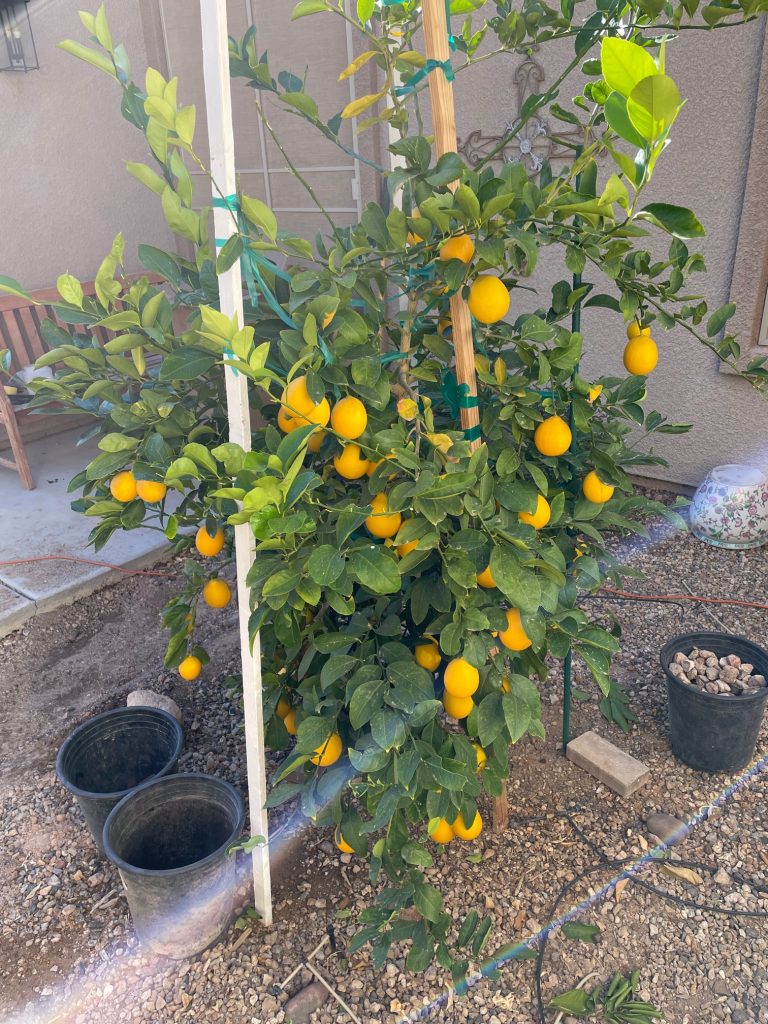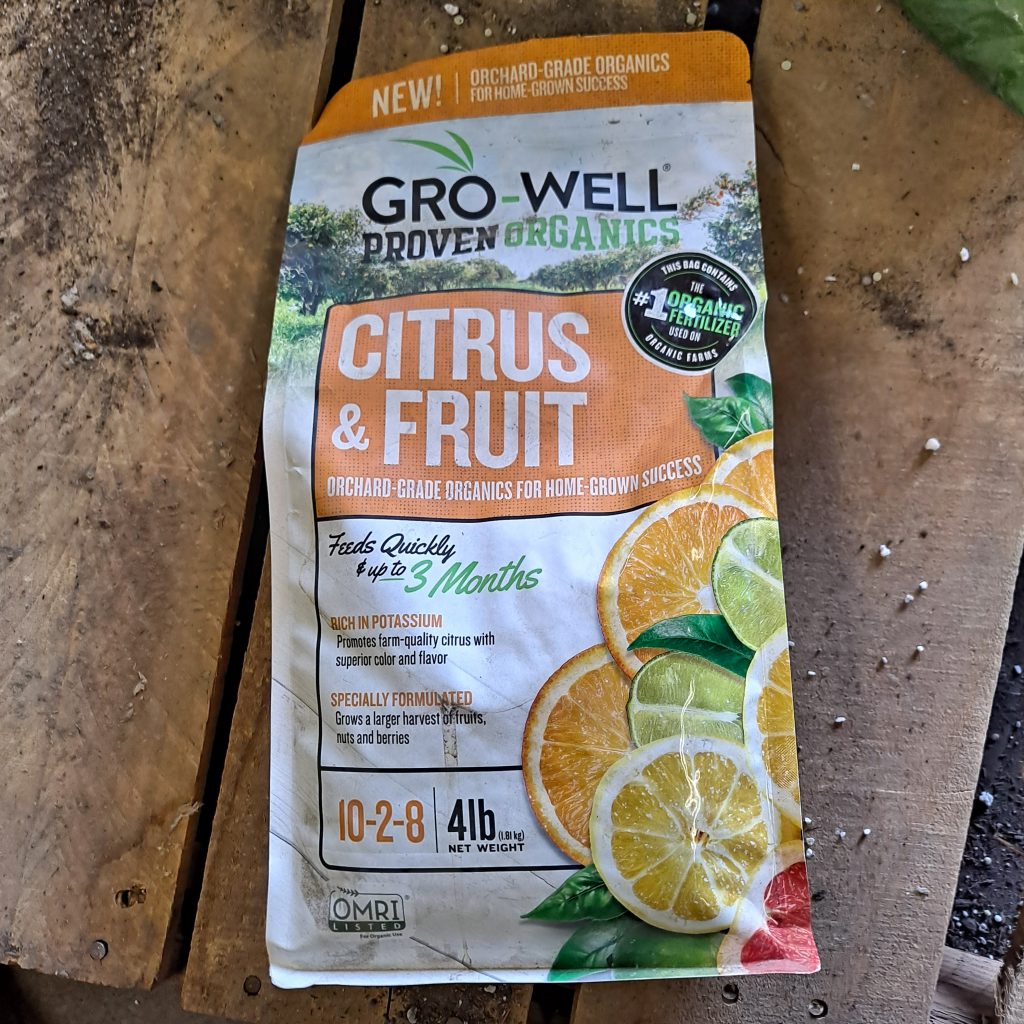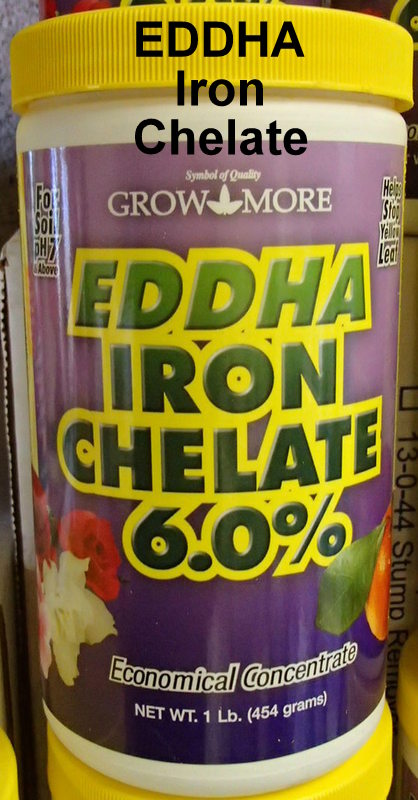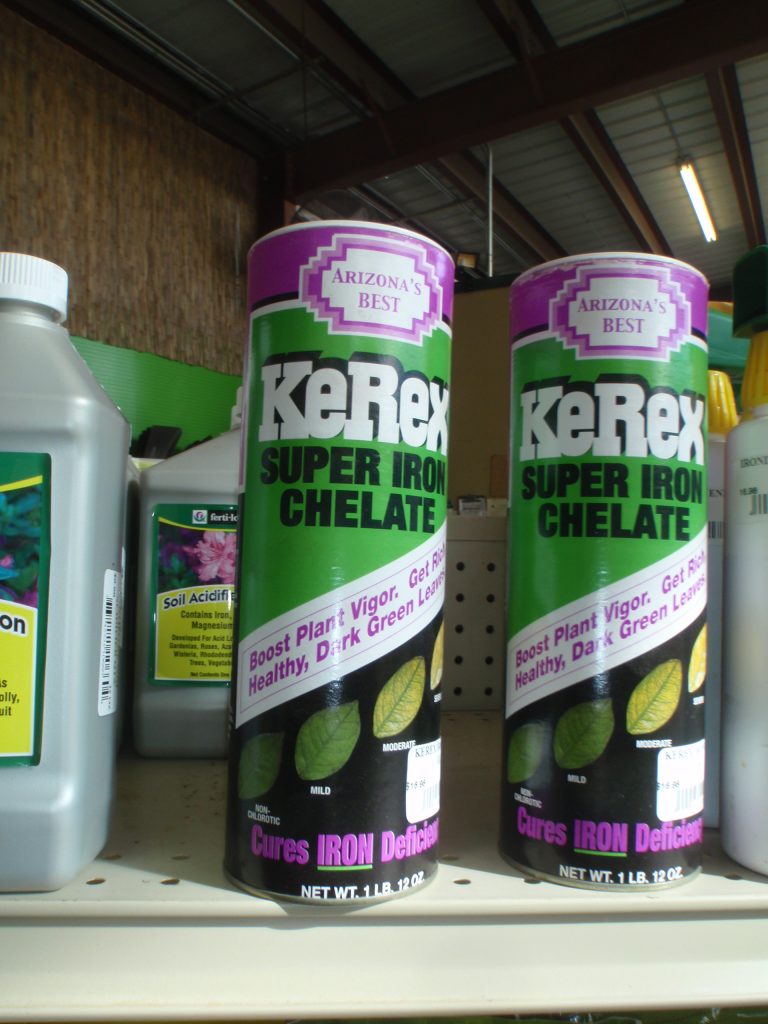Q. One of our mature Meyer lemons just crashed. I think we are giving it enough water. Were watering it once a week. I fertilized it and applied Kerex iron.
A. It is the end of May. Make sure it is not water problem. Right now, we should be applying water to it (at least half of the spread of its canopy and to a depth of 18 to 24 inches) twice a week starting about 2 to 3 weeks ago for most soils and fruit trees in the Las Vegas area. That is the first thing to take care of before we start correcting other problems. It is mesic in its water use, not a desert tree.

During spring is a dangerous time to fiddle with the amount of water. If you skimp on water while the fruit is getting larger, then it may make fruit smaller because you were not applying enough water. Enough water MUST be available to the fruit as they enlarge if you want the fruit larger. Never daily. That’s a no-no. If water is applied too often then diseases are a problem. The first thing to do is make sure there is enough water present for fruit formation, but not watering daily so that diseases develop. Right now for most soils we should be watering twice a week in Las Vegas and using a thick surface mulch.

Next are the nutrients. For the fruit and trees to be healthy and to produce healthy fruit, all nutrients should be present. That’s the purpose of wood chips plus fertilizer. They rot or decompose when water is present. That’s why we fertilize fruit trees at least once or twice a year with the macro nutrients nitrogen, phosphorus, and potassium (NPK).

Iron applications are different. Iron is a MICRO nutrient and not available in many of our desert soils because of the soil pH. Iron is needed in much smaller amounts, but it is still very important. In fact, it is essential (along with manganese and zinc). All three are affected a lot by a soil’s alkalinity or acidity (pH). All three of these micro nutrients are affected by (in our soil especially iron) their availability in a high pH desert soil. Any yellowing of leaves can be any of these three nutrients! But iron is MOST LIKELY in our desert soil.

Many of our iron fertilizers (any of the older iron types) ONLY works if the pH (alkalinity) of our soil is measured at 6.8 or lower. EDDHA chelated iron was made so that it works at any soil alkalinity (any pH)! Any type of iron, including EDDHA, must be applied to our soil only from February through about May. The closer to February, the better.

Let’s clear up the water and mulch problems first. After that is done, we can talk about other tree issues that might pop up. Water is the biggest problem (not enough or watered too often) your tree is facing!